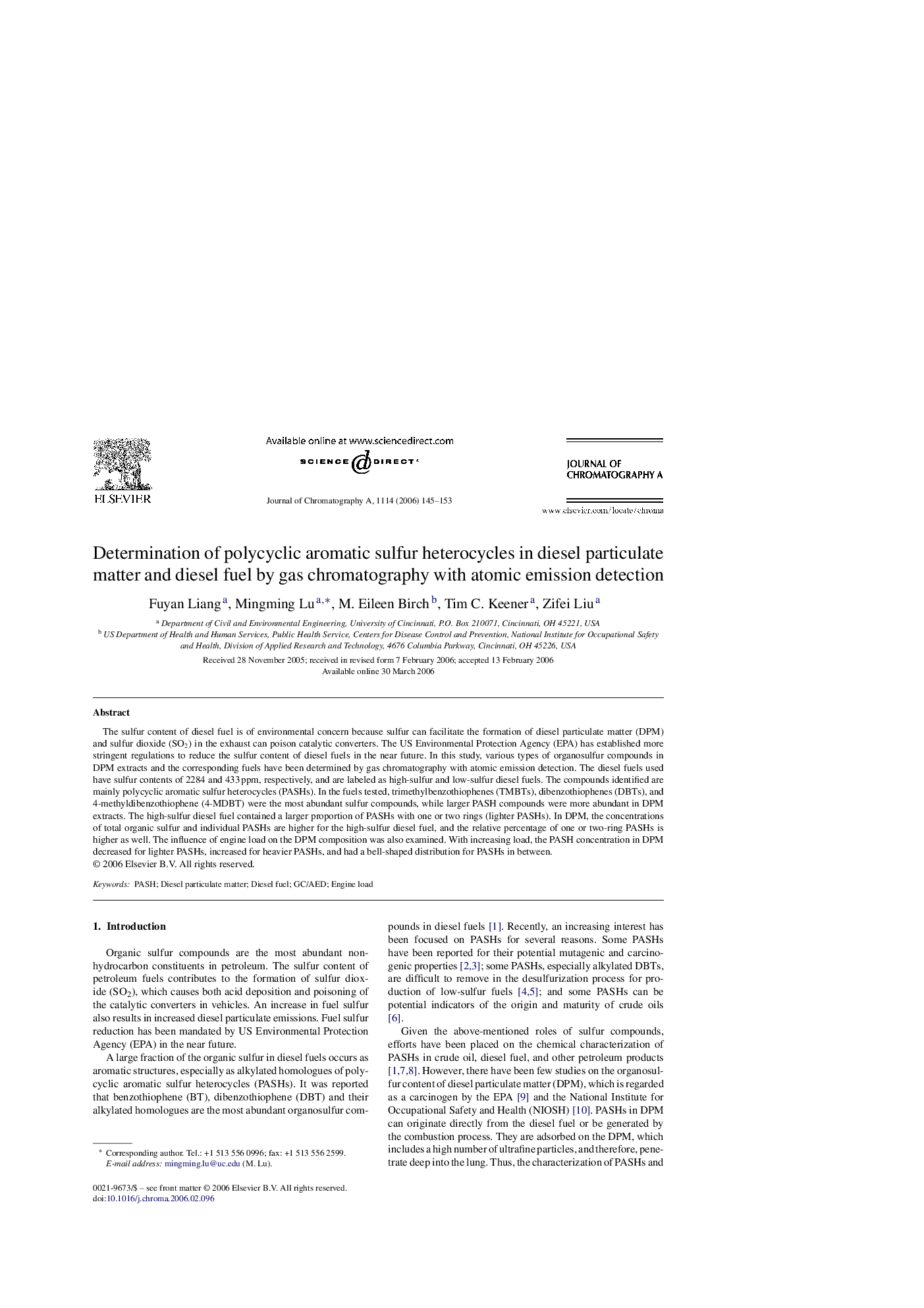| Article ID | Journal | Published Year | Pages | File Type |
|---|---|---|---|---|
| 1211532 | Journal of Chromatography A | 2006 | 9 Pages |
The sulfur content of diesel fuel is of environmental concern because sulfur can facilitate the formation of diesel particulate matter (DPM) and sulfur dioxide (SO2) in the exhaust can poison catalytic converters. The US Environmental Protection Agency (EPA) has established more stringent regulations to reduce the sulfur content of diesel fuels in the near future. In this study, various types of organosulfur compounds in DPM extracts and the corresponding fuels have been determined by gas chromatography with atomic emission detection. The diesel fuels used have sulfur contents of 2284 and 433 ppm, respectively, and are labeled as high-sulfur and low-sulfur diesel fuels. The compounds identified are mainly polycyclic aromatic sulfur heterocycles (PASHs). In the fuels tested, trimethylbenzothiophenes (TMBTs), dibenzothiophenes (DBTs), and 4-methyldibenzothiophene (4-MDBT) were the most abundant sulfur compounds, while larger PASH compounds were more abundant in DPM extracts. The high-sulfur diesel fuel contained a larger proportion of PASHs with one or two rings (lighter PASHs). In DPM, the concentrations of total organic sulfur and individual PASHs are higher for the high-sulfur diesel fuel, and the relative percentage of one or two-ring PASHs is higher as well. The influence of engine load on the DPM composition was also examined. With increasing load, the PASH concentration in DPM decreased for lighter PASHs, increased for heavier PASHs, and had a bell-shaped distribution for PASHs in between.
